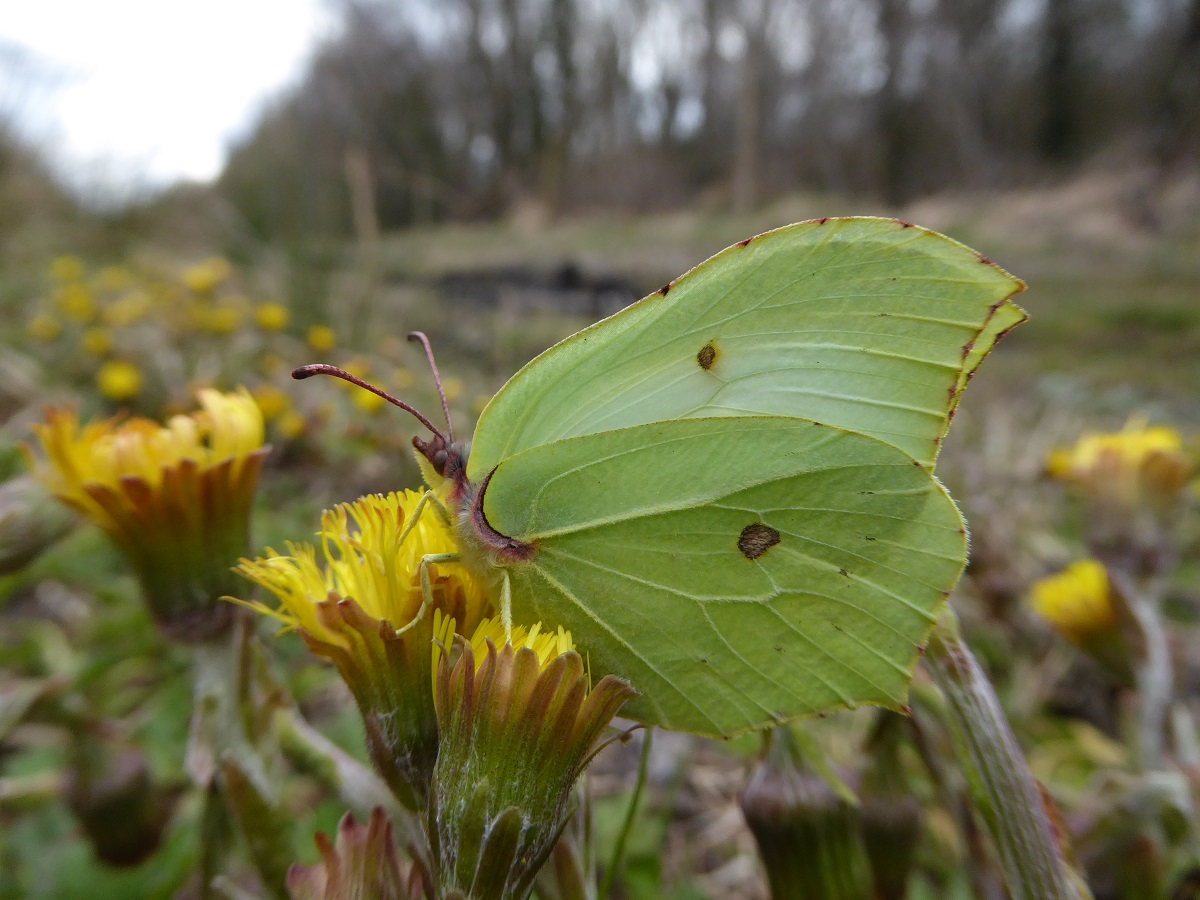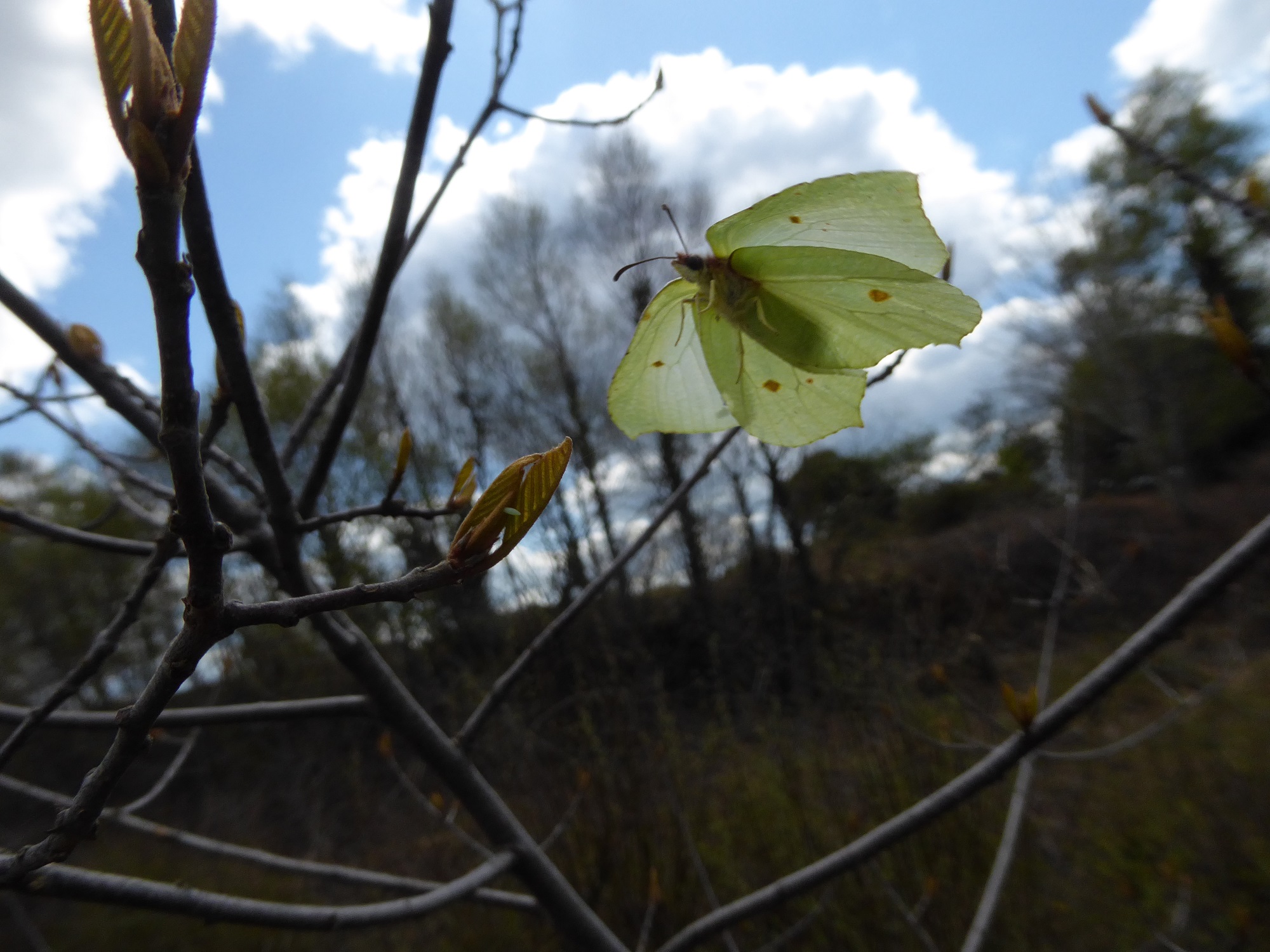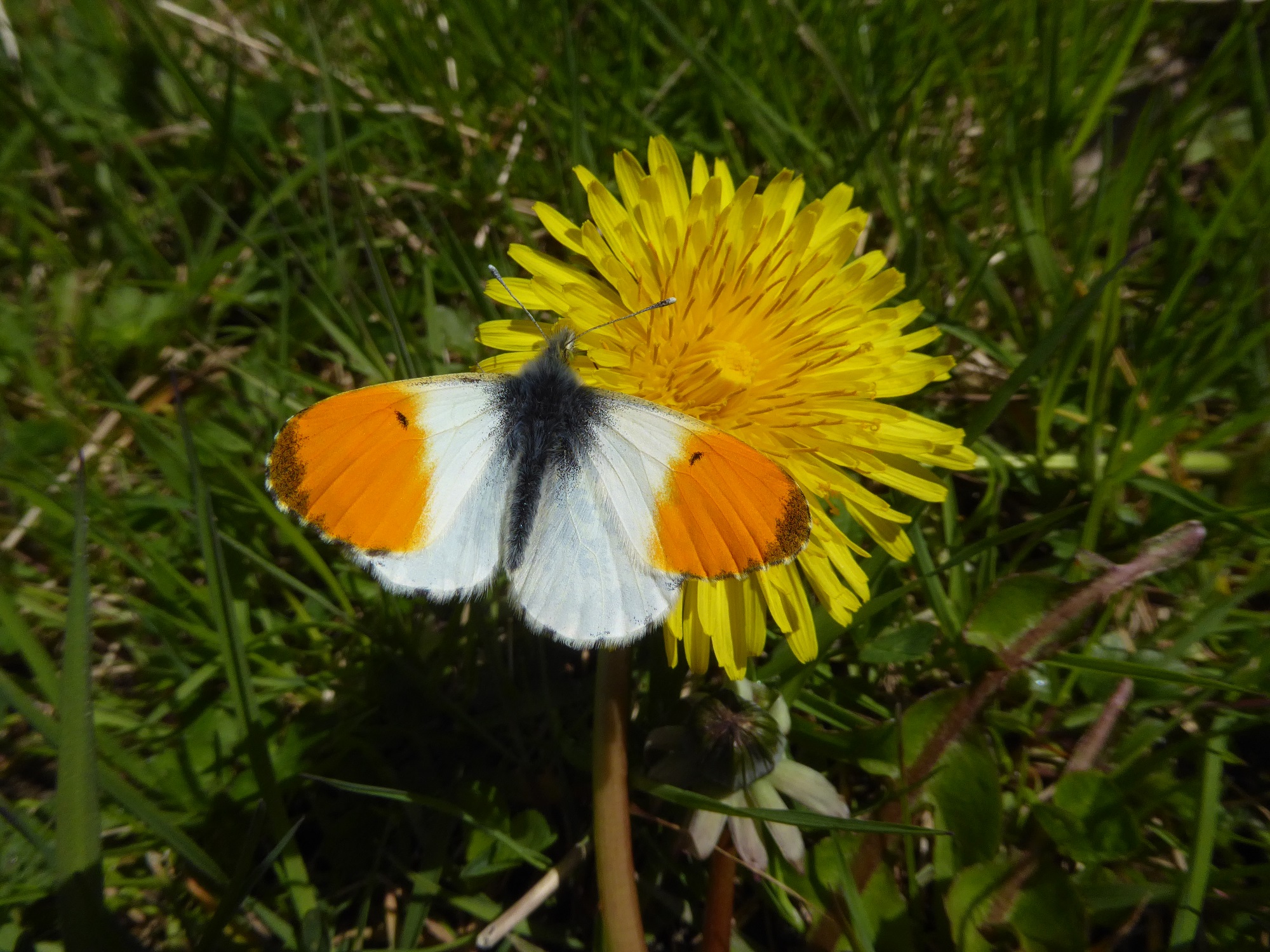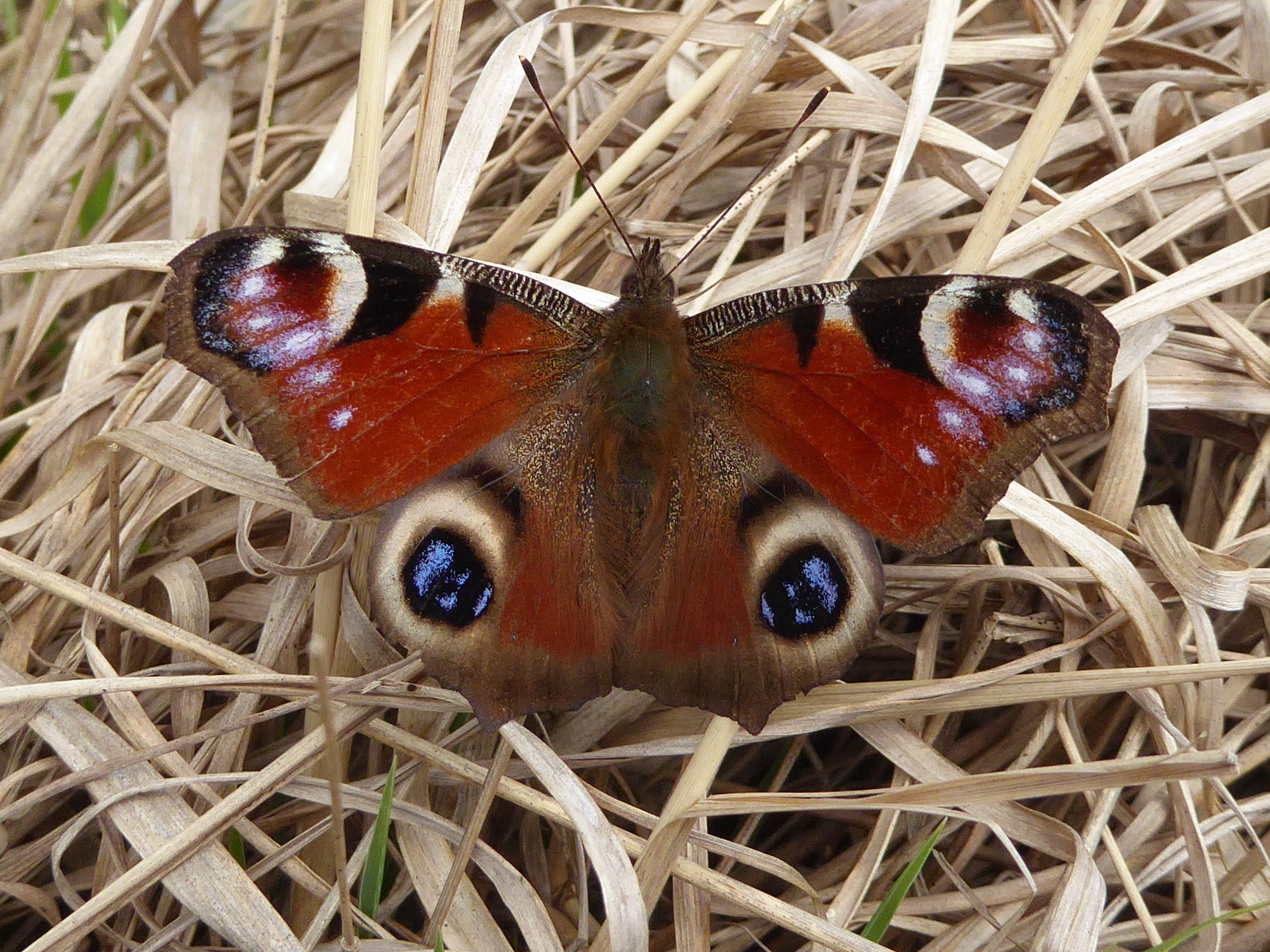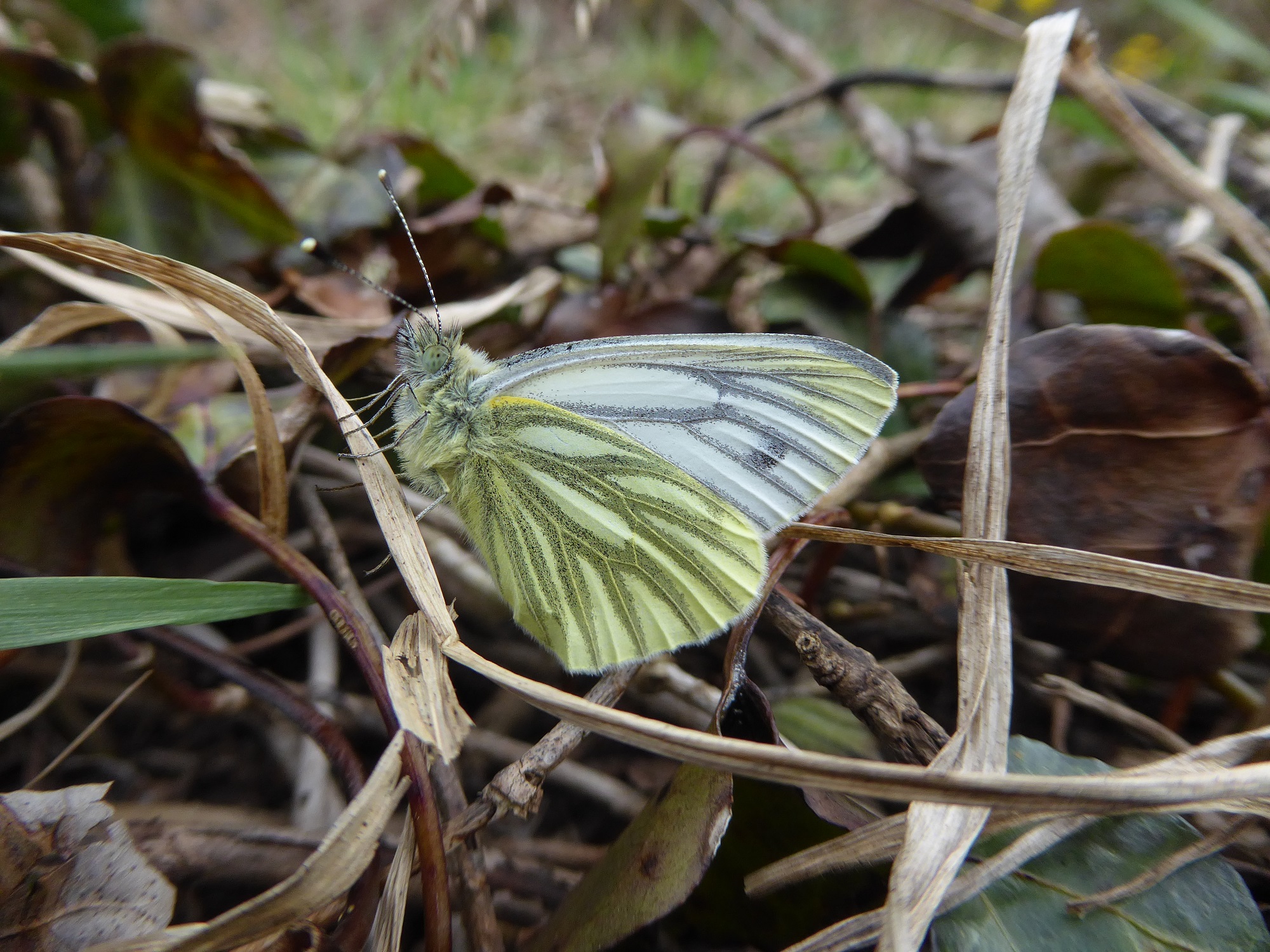After a long, dark winter and wet, cold spring there has been some nice activity over the past two weeks. The Orange-tip has finally broken its silence and is tremulously flashing his fresh orange painted forewings across the countryside canvas. He took his time, held back by forbidding cold. He is a welcome sight.
The humbler, dainty Green-veined White is now occupying the same wood clearings, tree-lines, hedge-banks and wetlands as the Orange-tip. The two species often use different parts of the same food plant, Cuckoo-flower to avoid dangerous competition. The Small White has been sighted too but the second generation in summer is when the highest numbers are seen.
The Peacock, Small Tortoiseshell, Brimstone and Comma were first out. These over-winter as fully developed adults so have a head-start on everyone else. They all have the crucial advantage of longevity so can wait for their larval food plants to be ready. The Brimstone, for example, waits around two weeks after mating to lay her eggs and she will continue to lay until well into June or even early July.
Red Admiral and Painted Lady butterflies are migrants and can appear at almost any time of the year. Small numbers are recorded so far. The bigger numbers usually begin in summer.
The lovely Holly Blue is out in sunny, sheltered areas from Donegal to Dublin. The main spring flight is usually in May but March records occur in early warm springs, but not this year. The tiny Green Hairstreak has been sighted in out of the way places such as bog edges and wet heaths beloved of this beautiful creature.
Finally, the Speckled Wood has emerged but in very small numbers so far. A fiercely territorial male will beat off any other male who tries to muscle in on his warm, sunny patch of hedgerow or wood edge. Battles involving tight spirals are often seen on country roads from April to October.
In May look for Wall Brown, Dingy Skipper, Large White, Cryptic Wood White, Common Blue and Marsh Fritillary. In the Burren, look for our greatest rarities, the Pearl-bordered Fritillary and Wood White. These two species will fly together, in herb-rich areas of open scrub. And remember to send in your records to us by email to conservation.butterfly@gmail.com. See Records tab first!
